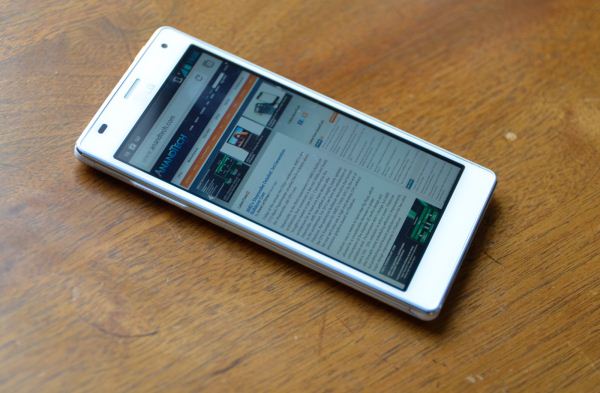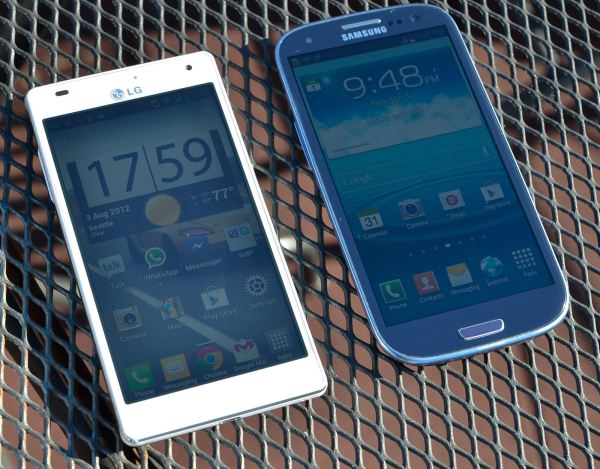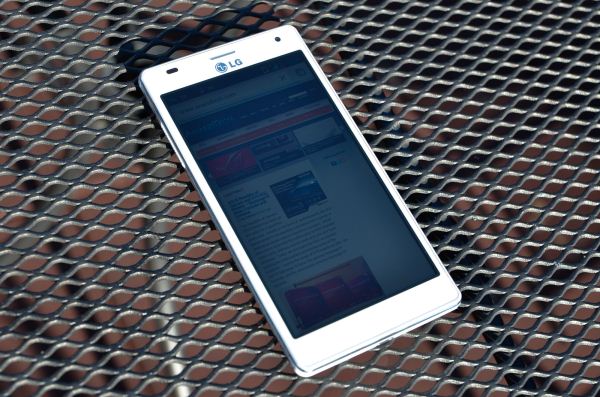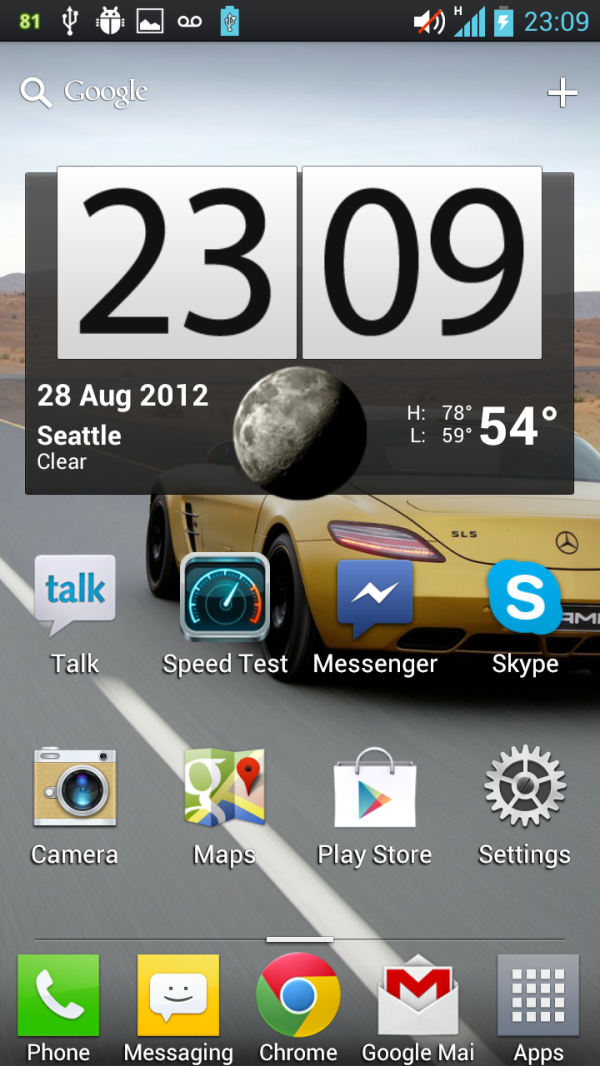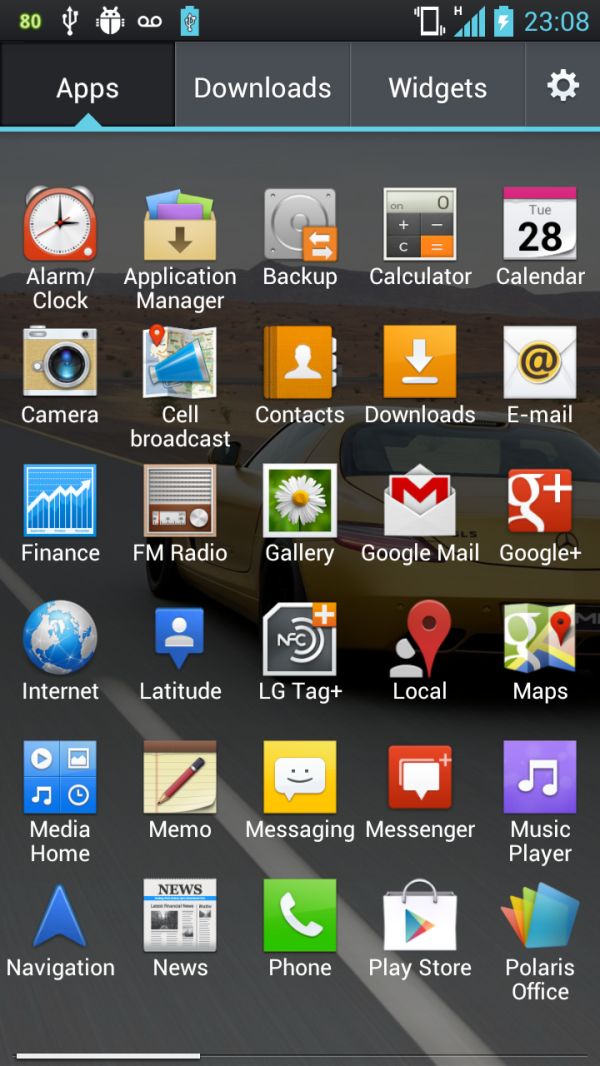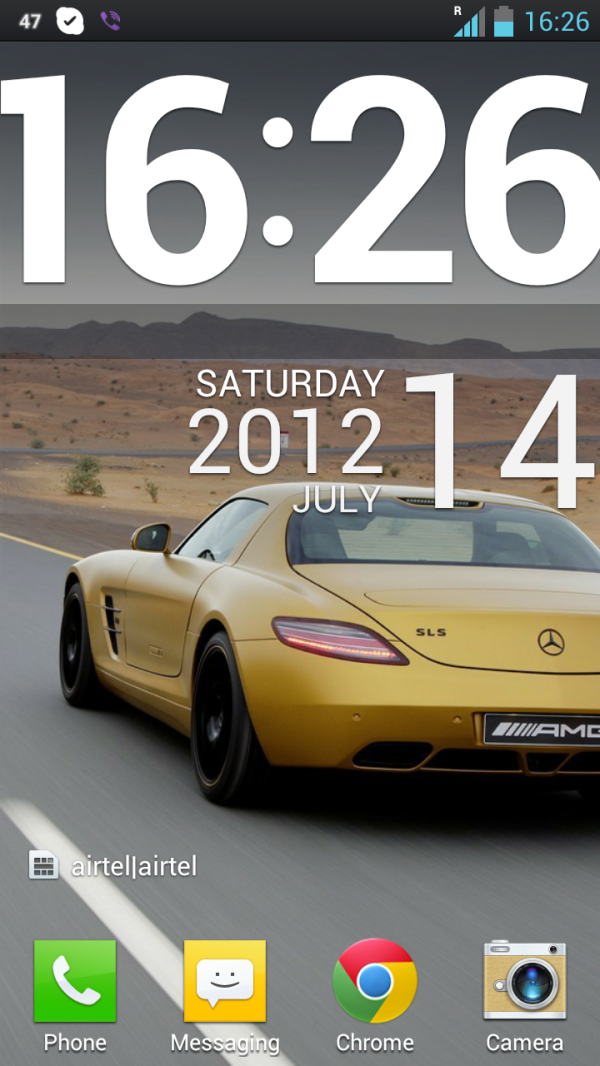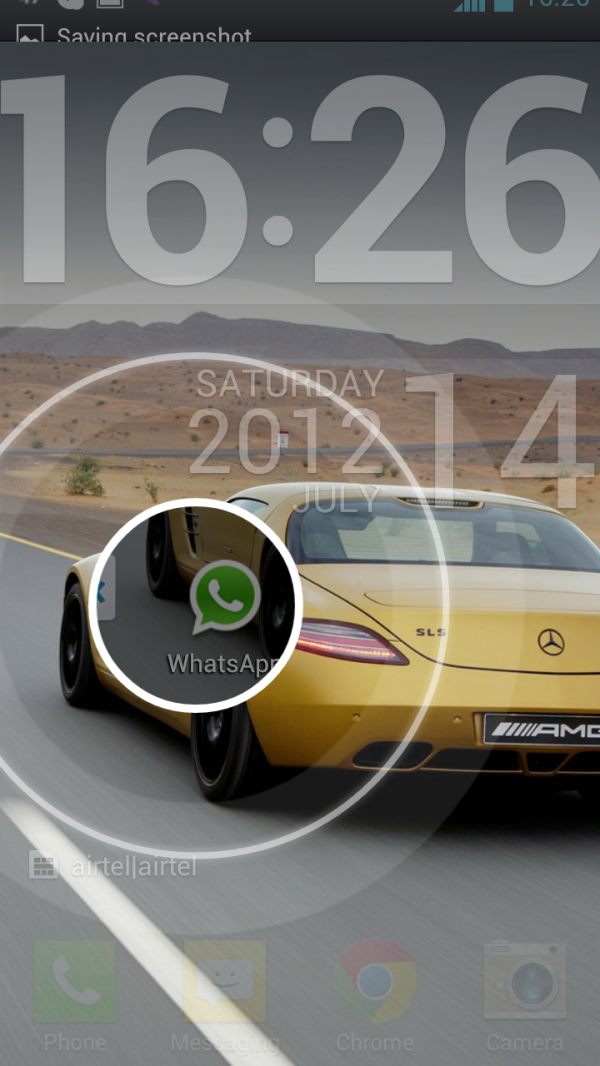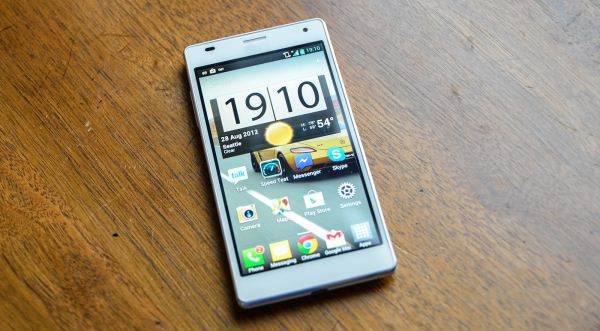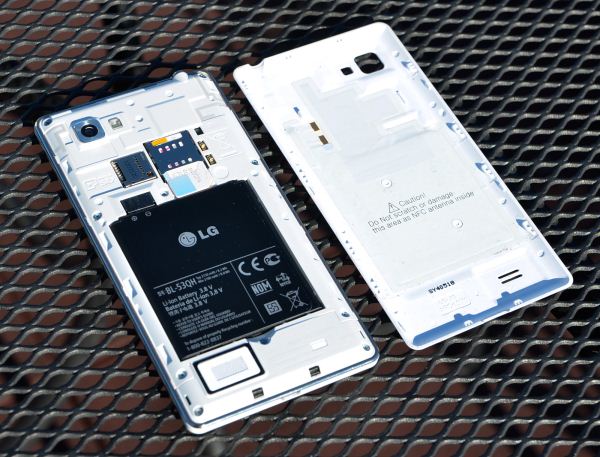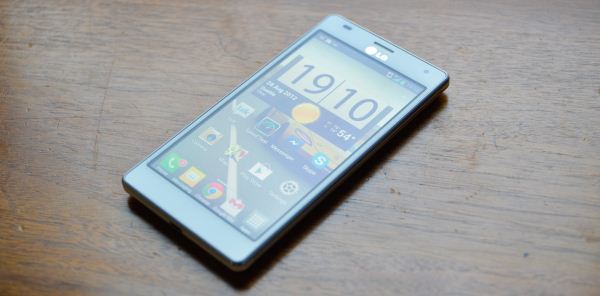
Original Link: https://www.anandtech.com/show/6098/lg-optimus-4x-hd-international-quadcore-love
LG Optimus 4X HD: Tegra 3 Handsets Stay Global
by Vivek Gowri on August 29, 2012 4:30 AM EST- Posted in
- LG
- Smartphones
- Ice Cream Sandwich
- Mobile
- Tegra 3
LG, recently, has been in a pretty uncertain place in the smartphone world. It’s been a long while since it had a relevant high end Android device, especially in the US market. The low end Optimus T and it’s stateside variants have succeeded in delivering a solid entry level Android experience, but in terms of headlining devices, they’ve been a little short. The Optimus 2X and G2x made a decent splash, and the G2x was probably LG’s last true hit in the US market. Since then, the Optimus 3D hit the US market as the Thrill to a relatively lukewarm reception, and LTE devices like the Revolution, Spectrum, and Nitro have been similarly neglected by the market. Mostly, the problem has been twofold: mediocre hardware design, and rather poor software builds, both in terms of UI as well as stability. LG’s Froyo and Gingerbread skins were ugly, clunky, and generally among the worst I saw from a major handset manufacturer at the time, and many devices (including the Revolution and, surprisingly, the G2x, even though it ran a nearly stock Android UI) were plagued by unstable software builds and infrequent update intervals.
So with all that in mind, this release cycle is very important for LG to re-establish itself as a maker of high-end Android phones, competing on the razor-edge of market share and mindshare with the HTCs and Samsungs of the world. Thus arrives the Optimus 4X HD, the flagship of LG’s new lineup, a device expected to go head to head with the international versions of the HTC One X and Samsung Galaxy S III. It comes with high expectations and a spec list to match - 1.5GHz Tegra 3 quad-core, 4.7” 720p display with an IPS LCD panel, 1GB of LPDDR2 RAM, 16GB of NAND storage (expandable via microSD), an 8MP camera with 1080p video recording, and a massive 2150mAh, 3.8V battery (8.2 Wh, or 8.17 if you do the math yourself.)
| Physical Comparison | ||||
| LG Optimus 4X HD | Samsung Galaxy Nexus HSPA+ | Samsung Galaxy S3 | HTC One X | |
| Height | 132.4 mm (5.21") | 135.5 mm (5.33") | 136.6 mm (5.38") | 134.8 mm (5.31") |
| Width | 68.1 mm (2.68") | 67.94 mm (2.67") | 70.6 mm (2.78") | 69.9 mm (2.75") |
| Depth | 8.9 mm (0.35") | 8.94 mm (0.35") | 8.6 mm (0.34") | 8.9 mm (0.35") |
| Weight | 133 g (4.7 oz) | 135 g (4.8 oz) | 133 g (4.7 oz) | 129 g (4.6 oz) |
| CPU | 1.5 GHz Tegra 3 Quad-Core Cortex A9 | 1.2 GHz TI OMAP 4460 Dual-Core Cortex A9 | 1.5 GHz Exynos 4412 Quad-Core Cortex A9 | 1.5 GHz Tegra 3 Quad-Core Cortex A9 |
| GPU | Nvidia GeForce ULP | PowerVR SGX 540 | ARM Mali400MP4 | Nvidia GeForce ULP |
| RAM | 1 GB LPDDR2 | 1 GB LPDDR2 | 1 GB LPDDR2 | 1 GB LPDDR2 |
| NAND | 16 GB NAND with up to 32 GB microSD | 16 GB NAND | 16/32/64 GB NAND with up to 32 GB microSD | 32 GB NAND |
| Camera | 8 MP with AF/LED Flash, 1.3 MP front facing | 5 MP with AF/LED Flash, 1.3 MP front facing | 8 MP with AF/LED Flash, 1.9 MP front facing | 8 MP with AF/LED Flash, 1.3 MP front facing |
| Screen | 4.7" 1280 x 720 IPS LCD-TFT | 4.65" 1280x720 SAMOLED HD | 4.8" 1280x720 SAMOLED HD | 4.7" 1280 x 720 LCD-TFT |
| Battery | Removable 8.17 Whr | Removable 6.48 Whr | Removable 7.77 Whr | Internal 6.66 Whr |
The Optimus 4X HD, One X, and Galaxy S III all have quad-core A9 SoCs, large 720p displays, and sit at the very top of each manufacturer's respective Android 4.0 lineup. It’s also interesting to note that at present, none of these three are available in the US in their quad-core international forms. Both HTC and Samsung have gone with 28nm Qualcomm dual-core CPUs and LTE/DC-HSPA+ modems with the American versions of the One X and SGS3, and it’s not currently clear when or in what form the Optimus 4X HD will reach the US. So let’s focus on the international version that we have here. LG dropped off the O4X HD at my house four days before I flew to India for a month-long vacation. I left my trusty Galaxy Nexus at home (a decision I regretted later because it deprived me of the chance to play with Jelly Bean) and brought along the Optimus to see how it fared as a standalone travel companion. My biggest question going in was whether or not LG had finally turned around their history of software woes, and if the included software build could keep up with the admittedly stellar hardware on tap. I ended up being pleasantly surprised, but we'll get there in time. First up - the design.
The Optimus 4X represents a thorough overhaul in LG’s design language. Gone are the melted-by-microwave contours, replaced by a sparse, geometric design focused on flat surfaces and radiused chrome edges. The overall effect is actually very reminiscent of the international and AT&T versions of the much-loved Galaxy S II because of the chrome ring around the bezel as well as the general flatness of the design. It’s different, with tighter radiuses making the rectangularity of the device that much more apparent, as well as an interesting brushed pattern to the plastic battery cover, but similar enough to make the comparison. As a huge fan of the Galaxy S II I-9100, I find it to be a very pleasing design. It doesn’t feel as ultramodern as the SGS3 and the One X, maybe a little bit last generation even, but there are some benefits to that.
The rectangular shape helps give the O4X very compact dimensions, with minimal overhang from the 4.7” display. As display sizes grow, the amount of wasted space around the display becomes a much larger concern to maintain pocketability and in-hand usability. While HTC and Samsung went with contoured design languages to combat this issue, LG stuck to basic geometric shapes and was very fastidious about keeping the footprint as small as possible. And for the most part, they’ve succeeded. It’s smaller than both the One X and SGS3, and comes very close to matching the Galaxy Nexus (4.65” display).
The styling is very, very clean, with minimal extraneous details. The front is entirely clean, other than the chrome LG logo, front facing camera, earpiece, and proximity sensor. There are three capacitive touch buttons (back, home, menu) that light up when touched but otherwise disappear to make it look like an unblemished piece of plastic. Having buttons appear only after they’re touched sounds counterintuitive, but you learn quickly to just stab in the general area of the button you’re going for. If you’ve ever used an Android device before, it comes pretty naturally. I do take issue with LG’s inclusion of a menu button instead of a task switcher, as I do with Samsung and the Galaxy S III. I much prefer the button layout of the GNex and HTC’s One series, with a dedicated task switching key in place of the menu button. My other problem with the O4X button layout is that the buttons are all placed very close to the screen, so it’s easy to accidentally press one of them while typing. A common one for me is hitting the space bar and the home key at the same time, which can get annoying pretty quickly. Ideally, LG would have included an extra millimeter or so, in order to give a bit more buffer room between the screen and the capacitive buttons.
The sides of the O4X HD are basically made up of two chrome rings separated by a contoured plastic center. The volume toggle protrudes from the plastic on the left side and is very easy to find by touch. The hardware button layout is dead set perfect; the power button and headphone jack are at the top and the micro-USB port is centered at the bottom, just as God intended them. I’ve gotten used to Samsung and Nokia’s fascination with putting power buttons on the right side, but it’s always a relief to get my hands on a device with everything in the right place.
The battery cover is white plastic, but not nearly as cheap feeling as the plastic used in the Galaxy S2’s battery door. It has beveled edges all the way around, giving it a bit of visual interest as well as making it easier to hold. The brushed texture also gives it an interesting feel, but contrasts weirdly with the triangular texture used on the sides and volume buttons. Removing the battery cover doesn’t really inspire much confidence in its construction, but it is at least better than what Samsung usually does, and I’ve dealt with enough of LG and Samsung devices to know that even if they don’t feel particularly solid, it’ll take more than standard operation to break the plastic. It’s reassuring to see removable batteries in the SGS3 and the O4X HD, with so many manufacturers switching to sealed batteries and unopenable devices in recent times. The Apple effect is catching on, but apparently the Koreans haven't gotten the memo, thankfully.
My first reaction to LG's shipping ICS skin (based on 4.0.3, LG is calling it UI 3.0) was simply “wow, this is a lot better than expected.” As time went on, I realized that it’s actually the best I’ve felt about an Android skin since...well....ever. I’m still a pure Android lifer, but I don’t mind UI 3.0. LG described it as unobtrusive and simple, and though I was skeptical at first, it’s really not very invasive.
As such, a lot of the good old ICS UI elements are present and accounted for, but LG has made the entire theme much lighter than ICS (good) as well as changing the iconography (not so good). My lone complaint with the stock Android interface is that it’s pretty dark, so the white menus and UI elements do a good job of making ICS that much less gloomy. The iconography is basic and dull, unfortunately, but at least LG lets you change the icons quite easily by holding down on them. It’s still very clean, thankfully - that’s what LG has done a good job with, really keeping the essence of ICS the same while just changing some of the details and adding functionality where they could. Examples being the lock screen shortcuts, a 5x6 icon grid in the launcher, quick setting toggles in the notifications drawer, and things like that.
The animations are all quite slick - you can basically touch anywhere on the lock screen and swipe to unlock the phone, and underneath your finger appears a transparent “window” that shows you your homescreen as you swipe outwards. It’s hard to describe, but hopefully the screenshot above gives you a decent idea of what I’m talking about. It’s also seriously cool to use in practice.
There are seven homescreens, with a number of different swipe animations to choose from - accordion, carousel, panorama, domino, layer, breeze, and the basic default. All of them are smooth, maybe not as much as Butter, but still quite good. And compared to the LG norm, this is leaps and bounds ahead.
There’s not much really to report other than that - LG hasn’t done too much to the ICS we know and love. It’s far less intrusive than Sense 4.0 - I tolerated it with the HTC One S, but I think deviates too much from Google’s Android builds and tries to be different simply for the sake of being different. I’ve also never been a huge fan of TouchWiz - I disliked it enough on my SGS2 that I almost immediately switched to CM9. The Nature UX variant on the Galaxy S III, though it has some nice animations, seems to be more cluttered than ever. It’s just inelegant, both in look and feel. I really have to applaud LG for going the opposite direction and not messing with a good thing - they added just enough functionality and fanciness in the UI to differentiate themselves from Google, but didn’t resort to a heavy reskin of ICS to achieve it.
At this point, Tegra 3 is mostly a known quantity, but the O4X HD was my first day-to-day experience with a T3-based smartphone. It's a pretty fun SoC, for sure. This is a pretty impressive amount of performance packed into a phone, but it does come with some drawbacks. Think of it like the first generation of quad-core notebooks – there’s too much power here. Simple as that. It’s fast, yes, breathtakingly so. But it’s also pretty power hungry, and heats up more than you would ever expect a phone to do. I can't wait for the die-shrunken Tegra 3+, which will certainly go a long ways towards quelling these issues.
Something worth noting is the lack of any immediate day to day performance differences between this and Krait-based devices like the One S or even older A9 dual cores like the Galaxy S2 or Galaxy Nexus - they're all fast enough to run a stock or lightly-skinned ICS build smoothly, and all of the remaining UI slowdowns are simply issues internal to ICS. Google basically admitted as much with Jelly Bean's Project Butter - no matter how much hardware you throw at ICS, those occasional frame rate dips will continue to exist. I'm admittedly not a particularly demanding smartphone user like, say, Brian is. I do a lot of messaging, a decent amount of browsing, and then the usual smartphone stuff like Facebook, Gmail, Twitter, camera, etc. But almost no gaming, and not that much in the way of HD video decoding. Honestly, Tegra 3 hasn't done anything for me that OMAP4 and Exynos 4210 weren't already able to do just fine. So while it's awesome that quad-cores have come to phones, I'm not certain that it'll change your smartphone usage patterns significantly unless you have a specific need for a ton of compute horsepower.

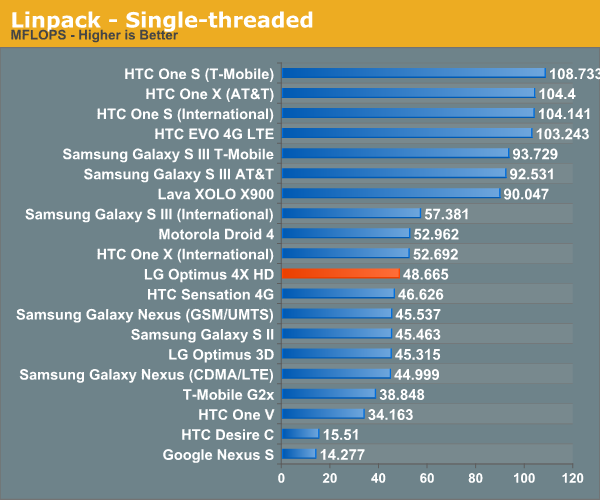
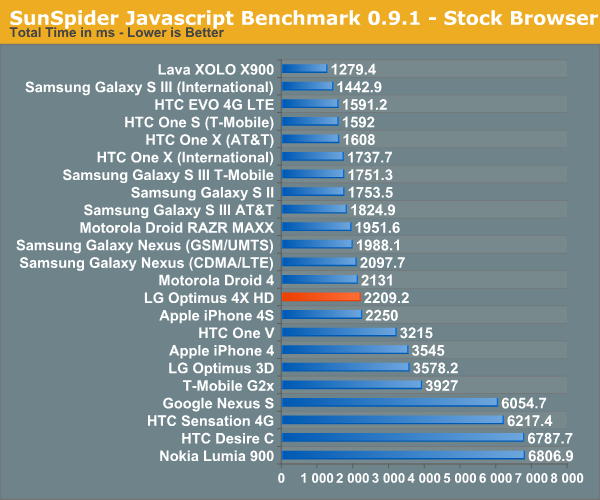
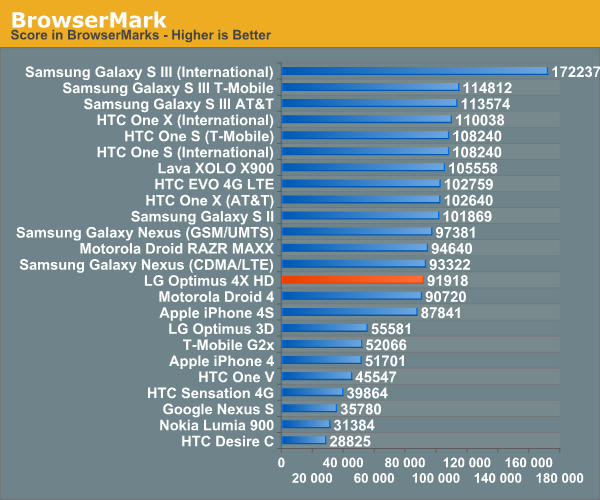
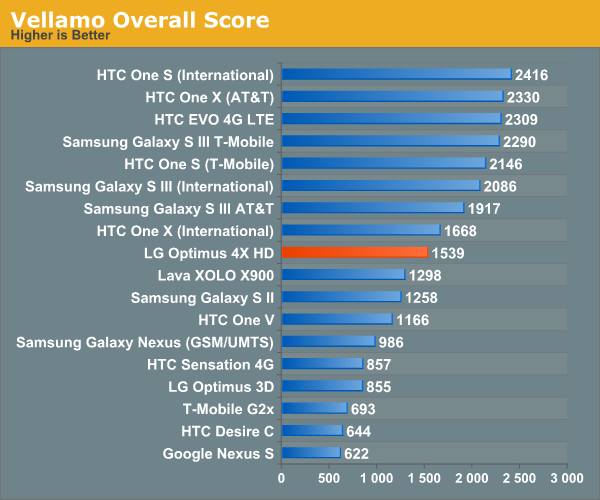
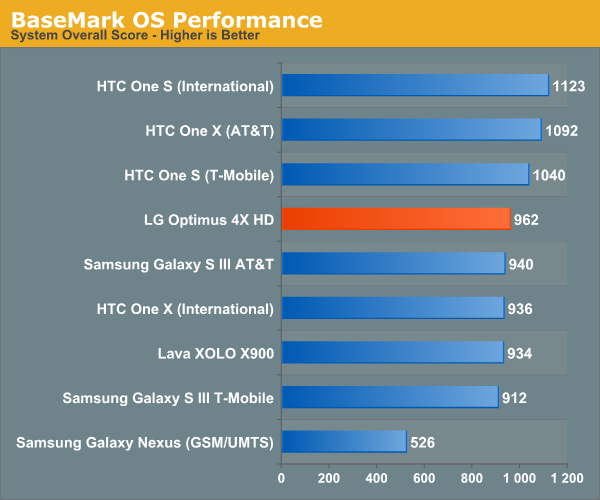
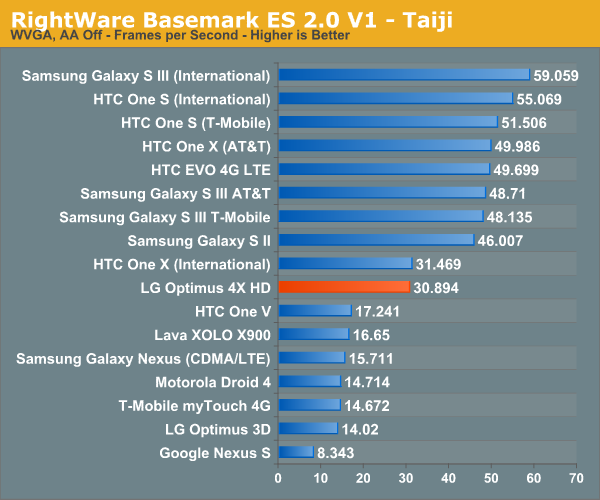
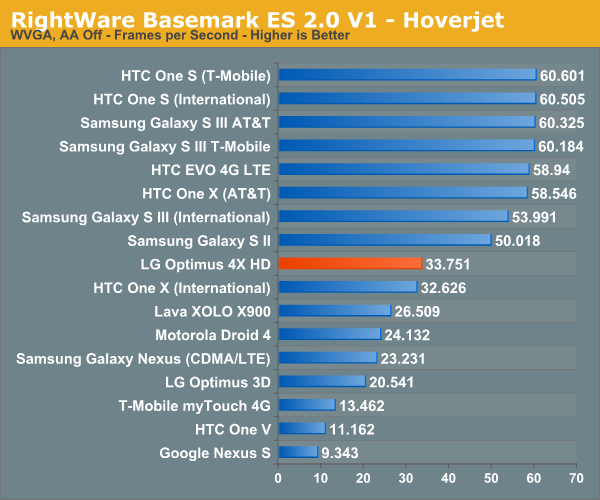
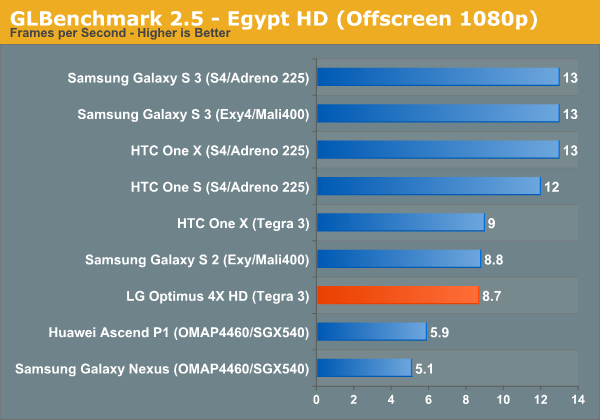
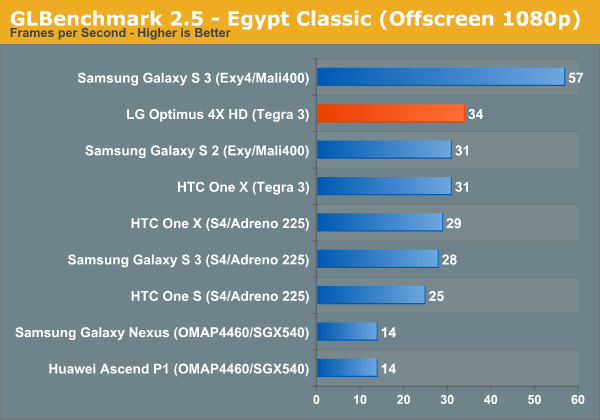
The only way the O4X HD significantly changed my usage patterns, actually, were related to battery life. Or, to be more accurate, the lack of it. It’s a phone that’s pretty brutal on battery, between the quad-core and the 4.7” IPS display, so I wasn’t expecting anything great to begin with. But connected to 3G, I was averaging roughly 24 hours of *standby* time. That means screen off, sync off, everything off - just with the phone sitting there doing nothing.
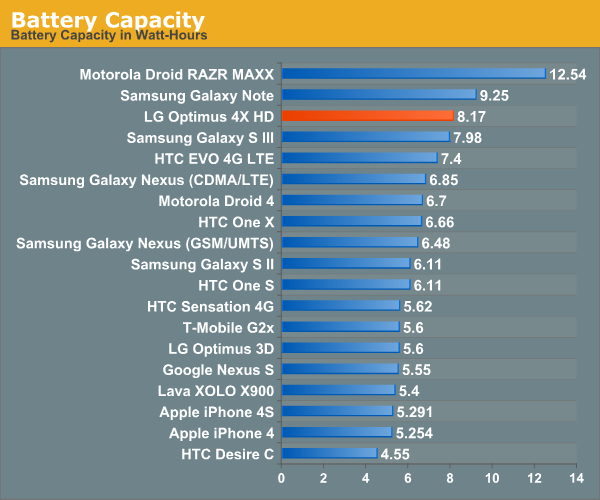
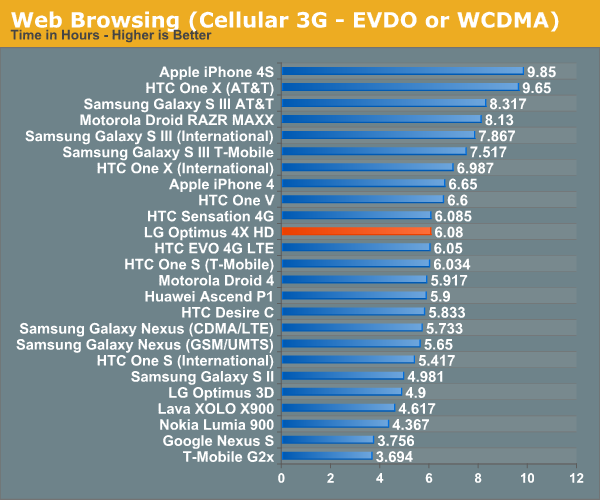
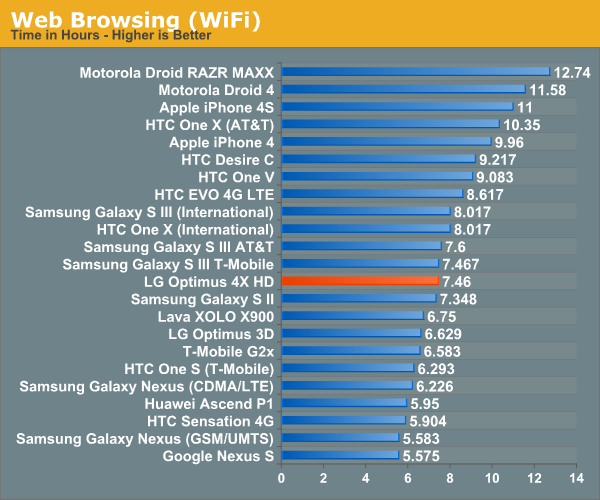

Our 3G browsing test ran the battery out in six hours and change, while the WiFi test pushed that number to 7.5 hours. 3G talk time ended up at just shy of 9 hours, so not bad, but the 3G browsing test is really what illustrates my problem here. Even with a large 8.17 Wh pack, battery life ends up pretty short. You can definitely get a full day of use (~16-20 hours, depending on how much you sleep) out of it if you’re not using it much, or if you’re content with EDGE data speeds, but with moderate or heavy 3G use, you’re going to spend a decent portion of your day hunting for power plugs.
LG devices typically have good displays, no matter how the rest of the device turns out (notable exception: the Revolution). The G2x, for example, was one of my favorite smartphones simply because the display was very, very good. It wasn’t borne out so much in our numerical tests, but the IPS panel had decent contrast and brightness numbers and really, really nice colour reproduction, so it looked very nice even if it couldn’t match the brightness or contrast ratio numbers of the Sensation or Droid X2.
The Optimus 4X HD’s namesake is the same obligatory massive 720p display that has seemingly defined every headline phone since the Galaxy Nexus. It’s an IPS panel like the G2x, and looks similarly great, with a pixel density of 312 PPI, class leading brightness and near-180 degree viewing angles. It’s an RGB stripe panel, so subpixel density ends up matching the One X and being higher than the RGBG Pentile panels in the Galaxy Nexus and Galaxy S3. The O4XHD at full brightness is actually painful on the eyes, and the numbers back it up - this is the brightest phone we've had go through our labs:
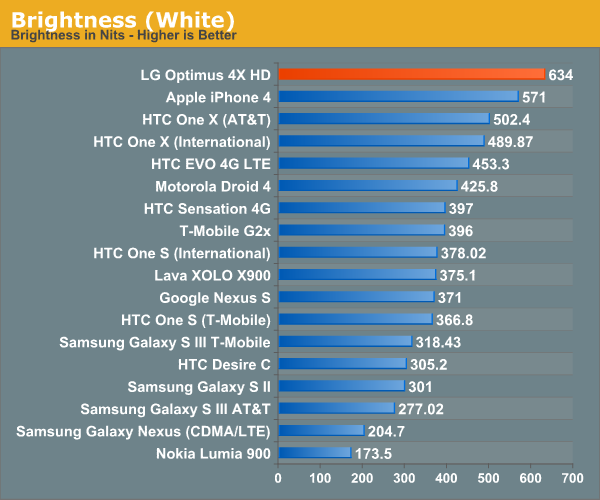
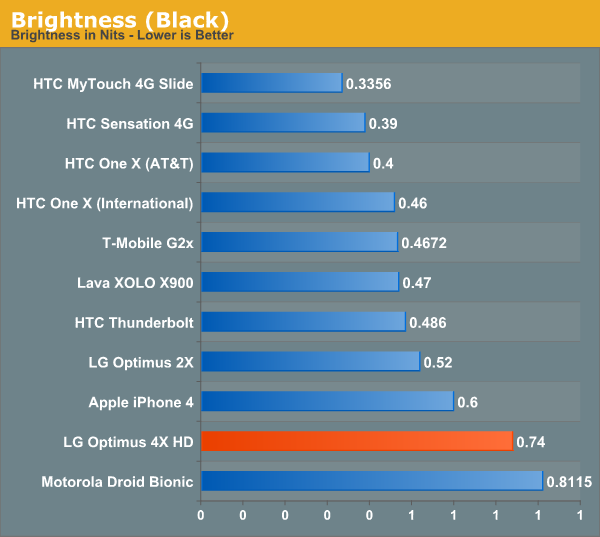
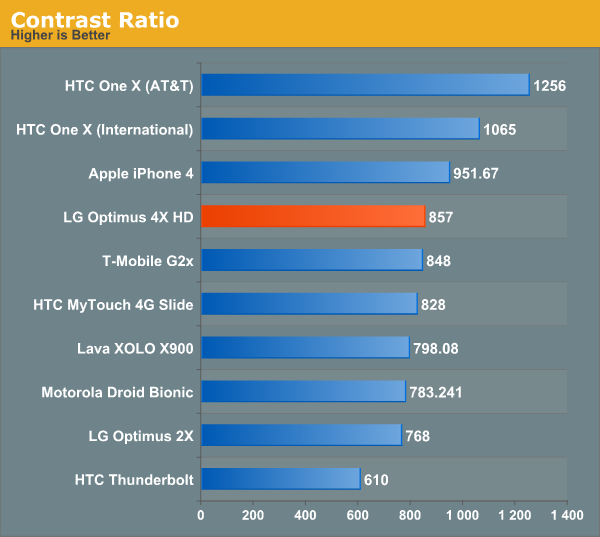
The contrast ratio of 857:1 is essentially the same as the G2x, and certainly competitive by mobile display standards - the black levels are a little bit on the high side, which is what hurts the display respective to the One X’s SLCD2 panel, but it’s not terrible. The only real issue I could find is that the screen appears to be set back a bit from the glass, and the gap results in a bit of extra glare that can be quite distracting under direct sunlight. It’s a minor complaint at best though, and the screen is bright enough to overcome the glare.
But while the display is very good, it can’t top the One X, which is far and away the most impressive mobile display I’ve seen thus far. I prefer the O4X HD to the Galaxy Nexus and put it just ahead of the SGS3, but both the One X and the One XL (AT&T One X) are just at a different level right now.
The Optimus 4X HD has a pretty standard 8MP camera with backside illumination and 1080p video recording, along with a 1.3MP front facing camera. It’s a decent camera, and it’s improved on some key design flaws in the Optimus 2X camera, particularly the elimination of the plastic window in the battery cover. A bit of digging showed that the CMOS sensors front and back are Sony chips - IMX119 in the front and IMX111PQ in the rear.
IMX111PQ is relatively new, with a sensor size of 1/4.0” and 1.12um square backside illuminated pixels. It shoots 8.08MP photos with a resolution of 3264x2448 as well as 720p60 and 1080p30 video. It’s a smaller sensor than the 1/3.2” Samsung CMOS used in the One X and SGS3, and from an optical standpoint it comes with what I believe is a 4P (4 plastic elements) system with a focal length of 3.2mm. The aperture is f/2.4, which isn't as fast as the f/2.0 of the One X/XL/S, but a bit better than the f/2.6 of the SGS3.
Image quality is pretty good - the O4X HD proved to be a reliable camera sidekick for my travels in India. Between the smaller sensor and the smaller aperture, low light performance definitely isn’t as good as the HTC One camera, but as long as you have a decent amount of light you can produce some really nice images. Compared to the previous year of high-end LG devices, it’s a significant upgrade.
What isn’t, though, is the camera application. It appears pretty similar to LG’s old camera application, but I remember the old one working significantly better than the one in the O4X. If you’re not paying attention, it’s really easy to take an out of focus picture, and pictures in the dark are no longer focused with the flash on. Another problem? Focusing doesn’t happen nearly quick enough. It’s hard to get good pictures out of it, plain and simple. Compared to the super slick camera applications that HTC has been shipping over the last 12 months (not only in the One series, but also with the Amaze and MyTouch 4G Slide from last year), I was pretty disappointed with LG here. The O4X is more than capable of creating quality images, it just takes more work than it should to capture them.
The cellular heart of the O4X is Intel’s XMM6260 mobile baseband, a 40nm part that is essentially a platform containing X-Gold’s 626 modem and the Infineon SMARTi UE2 RF transceiver DSP, along with the 3GPP Release 7 HSPA+ protocol stack with support for HSPA Category 14 (21.1 Mbps, which qualifies as HSPA+) downlink and Category 6 (5.76 Mbps) uplink speeds. The speeds are pretty standard these days, and nothing to raise any eyebrows in the days of mobile broadband that’s faster than a lot of home internet connections. At this point in time, LTE networks aren’t nearly as common in Asia as they are in American metropolitans, so the pressure to ship LTE devices in the international market is relatively low. This is why you see the international versions of the new high end devices shipping with HSPA+ instead of the 4G-branded LTE/DC-HSPA+ that tend to rule in the US market.
We’re pretty familiar with this modem already, actually. Among other devices running XMM6260 and/or X-Gold 626? The GSM/HSPA+ Galaxy Nexus, the LG Thrill/Optimus 3D, the Lava Xolo X900, and the international versions of the One X, the Galaxy S II (GT-I9100), and the Galaxy Note (GT-N7000). And that’s not even scratching the surface, there are a plethora of devices running some variant of this baseband, including ones from Huawei and Lenovo. XMM6260 isn’t the latest and greatest anymore, but it’s a very solid, reliable baseband processor that seems to be the go-to component choice for a single-carrier HSPA+ modem.
The O4X supports the requisite quad-band GSM and WCDMA, which, as a T-Mobile user, left me out in the cold, dark world of EDGE data speeds. (Side note: this is the other reason I love the G-Nex. Pentaband WCDMA is like Red Bull, it gives you wings - a truly liberating feeling. I wish more phones had it.) I made good use of Airtel’s HSPA+ network in India, and got data speeds ranging anywhere from 50 kbps to 4 Mbps depending on where I was. It was variable, to say the least, but as long as I stayed in metropolitan areas, I found the mobile broadband pretty livable.

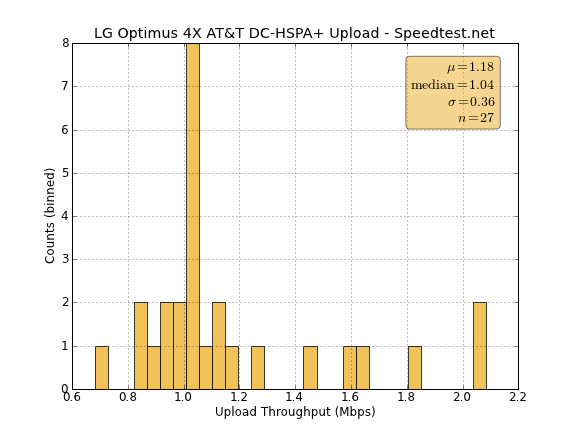
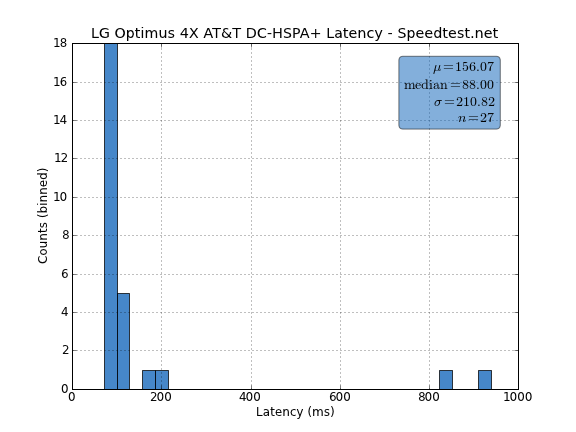
In the US, I did my network testing on AT&T because, really, who wants to use a phone with only an EDGE data connection? (All you T-Mobile iPhone users, I seriously question the amount of pain you go through just to have an iPhone on the Big Magenta. I wouldn’t consider it until T-Mobile converts a significant portion of their PCS band to WCDMA, which can’t happen quickly enough.) I saw download speeds mostly in the 4-7 Mbps range, occasionally dropping down into the 2 Mbps range when signal strength was low, with upload speeds usually somewhere in the 1-1.5 Mbps range. Pretty standard stuff, all the way around.
LG, quite simply, needed to hit a home run with the Optimus 4X HD after a string of poorly received products - devices that hit the right boxes on paper but ended up having mostly unsatisfactory user experiences for a variety of reasons. And they’ve mostly succeeded - the hardware is as solid as expected, and the software is an absolute revelation compared to LG’s previous efforts. It’s impossible to emphasize how big of an improvement UI 3.0 is compared to LG’s old Gingerbread ROMs (a place where life was most certainly not good), and it’s quite solid too. Compared to clunky reskins like Sense 4.0 and TouchWiz Nature UX, UI 3.0 is streamlined and stays quite true to the original ICS vision. To be honest, I think with the added functionality and UI chrome, I prefer it to the stock ICS build on my Galaxy Nexus (of course, after updating to Jelly Bean, it’s a different story, but still...).
For the US market, I’m not sure how much it matters either way. LG has given us no indication whatsoever as to a North American launch, but they will have to release a new phone in the US at some point, so odds are it will be related to the international Optimus 4X HD in some way. Last time around, the Optimus 2X underwent a modem change (to X-Gold 626, interestingly) and came here as the G2x on T-Mobile; the O4X would only need different WCDMA bands to run T-Mobile’s HSPA+ network, since the modem is already HSPA+ compatible. LG could also join Samsung and HTC in skipping an American quad-core launch in favor of a tweaked model with a Qualcomm SoC paired with a 28nm LTE/DC-HSPA+ modem. We know that the Optimus LTE II with MSM8960 and a 4.7” 720p display - sound familiar? - is supposed to hit Verizon at some point as the VS930. If it’s anything like the O4X, it’ll be significantly better than the preceding VS920 Spectrum and VS910 Revolution. And the announcement of the Optimus G is another factor - it has LTE and should be much more attractive to American carriers in its default state, so perhaps we'll see carriers wait for that device. But without speculating further, I’ll just say that it will be interesting to see what LG chooses to do in the US market.
Now with all that out of the way, I think my flagship phone recommendation for most consumers is still the One X. The industrial design, display panel, and camera are absolutely top notch, and other than the software side of things, it’s hard to find an area in which the Optimus 4X HD is significantly better. The HTC just offers a better all around hardware package than the O4X HD, even though they are based on essentially the same silicon - the surrounding features like design, display, camera are the ones that make a difference. It’s polished, powerful, and impressive - traits that are important in a high-end phone. The SGS3 comparison is a little bit different - the international S3 is more powerful than the Tegra 3-based O4X and One X, so even with lingering concerns about the design and form factor, it certainly has its appeal. If you care about performance, S3 and Exynos 4412 clearly have the edge, and if you care about design, One X is the way to go. On a hardware level, the Optimus 4X HD ends up playing second fiddle to both. It’s by no means a poorly designed phone, but it’s neither as powerful as the SGS3 nor as polished as the One X, so the O4X is less compelling than either for precisely those reasons. On paper, at least. In real life, I prefer the O4X HD - the elegance of LG’s software package, in my book at least, has a bigger impact on my day to day usage of the phone than the hardware polish of the One X or the GPU horsepower of the S3. In my personal rankings, the O4X HD and One X are almost even, with the O4X coming out just ahead, and the S3 is a definite third. But no matter what your preference is, we can say with certainty that LG has made it back to the ranks of high-end Android device makers, and with the Optimus 4X HD, they’ve truly created a well designed hardware and software experience.

